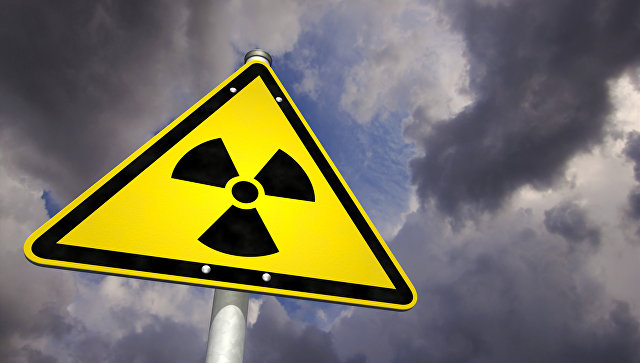The report about a certain quantity of radioactive ruthenium 106 (Ru-106) released in Russia’s Southern Ural has grown into a big scandal and even hysteria. In late Sept, the Federal Service for Hydrometeorology and Environmental Monitoring of Russia (Roshydromet) reported an “extremely high Ru-106 contamination” in the area, thereby confirming the supposition by France’s IRSN (Radioprotection and Nuclear Safety Institute) that the radioactive cloud registered over Europe in late Sept might have been produced by an incident in Russia or Kazakhstan.
Let’s try to answer the main questions concerning this radioactive scandal.
- What happened?
Roshydromet reported extremely high Ru-106 contamination 50-70 km far from Chelyabinsk near Argayash and Novogorny on Sept 26-Oct 1. The radiation level was 440-986 times higher than in Aug. On Sept 26-28 the radiation level in Bugulma, Tatarstan, was 11-16 times higher than a month before. In Volgograd and Rostov regions, the radiation level was 37-230 times higher.
IRSN suspects that the release might have happened at a nuclear waste treatment facility or a nuclear medicine center. In Chelyabinsk, they have Mayak, Rosatom’s facility producing goods for defense and treating spent nuclear fuel. That plant is 8-15 km far from Argayash and Novogorny.
“I suspect that Sept 25-26 night or Sept 26, the plant’s radioactive waste vitrification furnace emitted a big quantity of Ru-106,” Nadezhda Kutepova from the Ozersk-based Planet of Hopes environmental organization said on Facebook. Currently, Kutepova is living in France. She suggests that the furnace might have been of poor quality. “In Sept 2015, Mayak ordered the furnace from a company that was facing bankruptcy. In Sept 2016, when the furnace was not yet ready, the bankrupt company fired its workers. Nevertheless, Mayak paid for the furnace and on Dec 27 2016, the technology was launched. Some sources reported certain problems during the testing, but the company said that they had been solved. Thus, the furnace was built very quickly by God knows who for God knows what money God knows how. The question is: Was the IAEA aware of the launch of such a critical technology,” Kutepova wonders.
Mayak says that it could not be the source of the release. Ru-106 can be released by a broken nuclear reactor fuel rod, in the process of radiochemical processing or production, use or disposal of Ru-106-based sources. In the first case, Ru-106 would not be alone but together with some radionuclide fragments. The second case is also impossible as Mayak has not produced any ruthenium-based sources this year.
Environmentalist Andrey Talevlin says that the incident might have taken place in a different place. “For example, in the 1980s, the Chelyabinsk Electrometallurgical Integrated Plant reprocessed radioactive metal and even today, its slag disposal area has places containing radionuclides,” says Talevlin.
Deputy Director for Science of the Institute of Industrial Ecology of the Ural Branch of the Russian Academy of Sciences Ilya Yarmoshenko shares Talevlin’s opinion that Mayak was not the source of the release. “Ru-106 is often used as fuel for spacecraft, so, the release might have been caused by a fallen satellite. But no such falls have been recorded of late. So, the question is open,” Yarmoshenko says.
- How dangerous is the release?
Head of Roshydromet Maxim Yakovenko has confirmed that there was a Ru-106 release in the area but said that its concentration was tens of thousands times lower than the critical level and was not hazardous for the population.
“Imagine a scale from 1 to 5, where 4 is an alarming level and 5 is a disaster. Generally, we had 0.1 and, all of a sudden, the level jumped to 2. For us, it was an extremely high level but for the population, this is not dangerous,” Public Security Minister of Chelyabinsk region Yevgeny Savchenko told Interfax.
“According to Roshydromet, the dose the release might have given to a human was 20,000 lower than the admissible annual dose and was not dangerous for the population,” says Mayak.
Greenpeace Russia retorts that even though the cloud over Europe was small, tens of millions of people might have been affected and may now reveal some health problems. According to IRSN, the incident might have caused a release of as much as 100-300 terabecquerels. Just to compare, the admissible Ru-106 release level for Mayak is 10,000 lower. This means that the incident was serious and the people living nearby need to be protected.
Deputy Director for Science of the Institute of Industrial Ecology of the Ural Branch of the Russian Academy of Sciences Ilya Yarmoshenko says that the reported level was safe for the population and no evacuation was needed. “This is 100 times lower than the hazardous level. So, no evacuation was needed,” the expert says.
According to Russia’s Natural Resourced and Environment Ministry, Roshydromet is puzzled to hear such incompetent comments by some NGOs and mass media. “In late Sept, the level of Ru-106 was hundreds of times higher just because there was no Ru-106 in the Aug samples. The fact that such a small quantity of a radioactive isotope was detected proves that Roshydromet’s automated radiation monitoring system is very efficient,” the ministry says.
Greenpeace Russia still wants Rosatom to investigate the case and to inform the public of the current situation ay Mayak and some other companies and is also going to ask the prosecutor’s office to see if Roshydromet’s and Rosatom’s statements are true.
- Was it the hand of rivals?
According to Roshydromet, Sept 25-Oct 6, Western Siberia, Southern Ural and the Caspian region faced conditions that pushed vast air masses and contaminants they might contain to the Mediterranean Sea and Northern Europe. This is how the radioactive could might have reached Europe. But according to Head of Roshydromet Maxim Yakovenko, there are several possible sources of the cloud. Earlier, Rosatom quoted the IAEA as saying that during the same period, Ru-106 concentration in Romania was 145,000 microbecquerels per cubic meter, in Italy it was 54,300, in Ukraine and Slovenia 40,000 and 37,000, respectively.
“In Romania the concentration was twice as high as in Russia, in Poland and Ukraine the same. So, we can’t say where the cloud came from,” Yakovenko said.
According to Mayak, extremely high Ru-106 concentration was registered in Slovakia (on Sept 29-30) and in Romania (on Sept 30), which are almost 3,000 km far from Mayak.
The cloud should have gone through Crimea but the radiation level there is normal.
Editor-in-Chief of AtomInfo.ru Alexander Uvarov told Pravda.ru that this is the third information wave concerning a radiation release in Russia. “The date of the last report coincides with the date of the first big radioactive accident in the Soviet Union, the Kyshtym Tragedy (Sept 29, 1957). So, this might have well been a provocation,” Uvarov said. Earlier, Public Security Minister of Chelyabinsk region Yevgeny Savchenko told Ura.ru that the scandal might have been organized by Mayak’s rivals in France.
- Who is to blame for the scandal?
The authorities blame mass media and environmentalists for stirring up hysteria. But the authorities were the first to report the release. In early Oct, Germany’s Federal Office for Radiation Protection detected Ru-106 in the air in Austria and Germany and suggested that the source was in Russia’s Southern Urals region. Rosatom called this report an allegation and stated that no Ru-106 was detected in Russia Sept 25-Oct 7, except for St. Petersburg. The report of the French IRSN was published on Nov 10. A few days ago, Roshydromet de facto refuted Rosatom’s statement and confirmed the French report. In fact, Roshydromet has poured oil on flames. Its report was meant for specialists and nobody cared to explain it to ordinary citizens. Naturally, the only response ordinary journalists could give to the “extremely high concentration” term was hysteria. No surprise that some of them appeared in the internet with comments like, “We may face one more Chernobyl. Then too, everybody was silent and pretended that nothing had happened. Our authorities always prefer keeping silence.”
EADaily’s Energy Section

 Do not justify the upcoming aggression against Greenland with the "Chinese threat" — Chinese Foreign Ministry
Do not justify the upcoming aggression against Greenland with the "Chinese threat" — Chinese Foreign Ministry Putin held a reception against a young judoka — Tokayev
Putin held a reception against a young judoka — Tokayev The Venezuelan authorities announced cooperation with the United States
The Venezuelan authorities announced cooperation with the United States The Russian army has leveled the front line in the Dnipropetrovsk region — "Military correspondents"
The Russian army has leveled the front line in the Dnipropetrovsk region — "Military correspondents" Missile danger throughout Ukraine — MiG-31K in the air
Missile danger throughout Ukraine — MiG-31K in the air Not a "backyard": Cuba is ready to fight for Venezuela and for yourself
Not a "backyard": Cuba is ready to fight for Venezuela and for yourself Yle: There is a ban on the purchase of real estate by Russians in Finland, but there is no sense
Yle: There is a ban on the purchase of real estate by Russians in Finland, but there is no sense